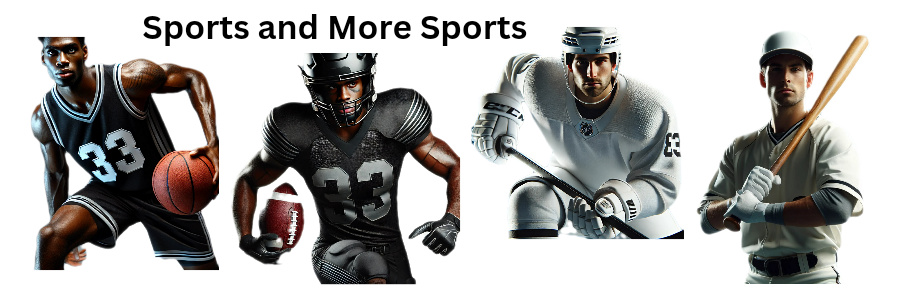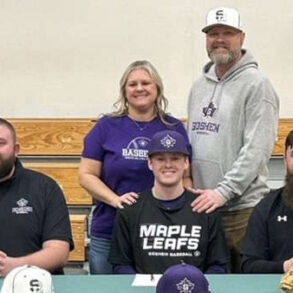
We recently redrafted the 2020 class to see which players would go where with the benefit of five years in hindsight.
As part of that exercise, we’re also exploring five winners and five losers from the 2020 draft. Like we mentioned in this exercise for the 2019 redraft, it takes plenty of time to know with certainty which teams did well and which did poorly in a baseball draft.
While there’s still plenty of time for things to change moving forward, we certainly have a better picture of the 2020 draft class today than we did when names were called in real time. Surprises happen each year, and the covid-shortened 2020 amateur cycle makes this specific class unique in the draft’s history.
Said one scout at the time: “This draft will be a case study moving forward. We’re going to be talking about this draft forever.”
Winners
Braves
Fourth-round pick Spencer Strider would place the Braves in the winners section by himself. The Braves not only have an ace in Strider, but a pair of all-stars between him and fifth-rounder Bryce Elder. That means Atlanta’s draft is responsible for half the current all-stars from this class. Atlanta’s 2020 draft leads all others with a cumulative 10.9 bWAR, nearly twice the second-place White Sox at 5.6. Between Strider, Elder and first-round pick Jared Shuster, the Braves have big leaguers with three of their four picks. Second-round outfielder Jesse Franklin has topped out at Double-A in back-to-back seasons and missed the 2024 season because of injury.
Cardinals
The Cardinals led all teams with four players who went inside the first 30 picks on a redraft. The class is now led by second rounder shortstop Masyn Winn, who we slotted in as the third overall player on a redraft. Winn’s premium position, excellent defense and youth makes him a great asset, while 70th overall pick Alec Burleson has logged as much major league playing time as any hitter not named Spencer Torkelson. Beyond those two, Jordan Walker still has enticing tools and youth on his side to figure things out, while righthander Tink Hence is a Top 100 prospect.
Giants
One of the criticisms of the Giants draft at the time was that they took a catcher in the first round only two years removed from selecting Joey Bart second overall in the 2018 draft. This is a good reminder that stacking talent at certain positions is more than OK in baseball’s draft. You never know who’s going to pan out. Bart struggled with the Giants over four seasons and was traded to the Pirates, while Patrick Bailey looks like the team’s catcher of the future, just won a gold glove award and also has a case to be the first hitter selected in a redraft. Third-round lefthander Kyle Harrison looks like a top-15 pick with five years of hindsight, and the Giants have a third big leaguer in this class with Casey Schmitt. No team has more projected 2025 WAR (per FanGraphs and Steamer projections) from their 2020 class than the Giants.
White Sox
First-round pick Garrett Crochet is the sole reason for the White Sox being in this winners’ circle, but you don’t need quantity in a draft class where you hit on an ace. While Crochet is no longer with the White Sox, he pitched to a 2.84 FIP over parts of four seasons and 219 innings. His trade to the Red Sox for a solid haul led by a pair of Top 100 prospects could help jumpstart Chicago’s rebuild. While fifth round lefthander Bailey Horn hasn’t done much in the majors, he, too, is a big leaguer who was traded to the Red Sox.
Pirates
The Pirates hit on big leaguers with each of their first three picks between second baseman Nick Gonzales, righthander Carmen Mlodzinski and righthander Jared Jones. Jones and Gonzales both fit in a top 30 redraft five years later, with Jones shooting up into top 10 territory and Gonzales slotting into the 20-30 range. Mlodzinski didn’t make the cut, but was one of a handful of players in consideration. Jones looks like the best pitcher in the class not named Crochet or Strider, and he boasts three extra years of youth compared to those two college products.
Losers
Twins
Just two college players selected in the 2020 first round haven’t made the majors. One of those players is first baseman Aaron Sabato, who the Twins picked at No. 27 overall. Sabato is a career .209/.339/.404 hitter in four minor league seasons. He hasn’t played beyond Double-A or come close to meeting the offensive expectations for his first base/DH profile. Second-round outfielder Alerick Soularie was released by the Twins, signed by the Giants and spent part of his 2024 season in Indy ball. Fourth-round righthander Marco Raya and fifth-round outfielder Kal’ai Rosario are the last hopes for this Twins draft class. Both still rank inside the team’s top 30 and Raya was added to the 40-man roster after a solid season in the upper minors.
Royals
The Royals can claim three big leaguers from this 2020 class, which is impressive for a six-player group of picks, but they also have the most high-profile miss of the draft. Picking fourth overall, Kansas City selected Texas A&M lefthander Asa Lacy, who ranked third on the BA draft board and was the highest-ranked pitcher in the class. He has struggled mightily with control and performance in the two minor league seasons he’s pitched. Lacy missed the 2023 season and 2024 with UCL surgery. The big league production of Nick Loftin, Tyler Gentry and Will Klein isn’t enough to keep them out of this tier.
Blue Jays
Despite me calling the Austin Martin selection the “steal of the draft” on draft day, it’s a pick that hasn’t aged well for the Blue Jays. While Martin is the only big leaguer of Toronto’s five-player class, he quickly showed impact concerns in pro ball and was shipped to the Twins along with Simeon Woods Richardson in a July 2021 trade that netted the Blue Jays Jose Berrios. Martin has been the worst big leaguer of the 2020 class per Baseball-Reference, with -1.0 bWAR after a 2024 season in which he hit .253/.318/.352 with an 89 OPS+. The Martin trade specifically has been good for Toronto, though the class is empty after Martin, as none of CJ Van Eyk, Trent Palmer, Nick Frasso and Zach Britton remain in the team’s top 30.
Reds
The Reds have done a nice job hitting on their first round picks in recent years, but the 2020 class stands out as a miss. First rounder Austin Hendrick was touted for his power and bat speed, but significant strikeout issues—he has a 36.6% career strikeout rate—have erased his prospect status and seem likely to prevent a major league career. The Reds haven’t found much value with their next four picks either—Christian Roa, Jackson Miller, Bryce Bonnin, Mac Wainwright. Fifth-round righthander Joe Boyle is a major leaguer, though as a below-average starter with the A’s.
Rays
The Rays took a big swing on righthander Nick Bitsko with their first pick at No. 24. He was a tricky evaluation because he reclassified from the 2021 class and might not have been a focus for many scouts during the 2019 showcase season and didn’t get to pitch in the spring as a Pennsylvania product. Five years later, the pick hasn’t panned out. Bitsko has thrown just 28.1 pro innings since signing, and he made only a handful of appearances in the Florida Coast League in 2024. Supplemental first-rounder Alika Williams is the lone big leaguer of the Rays 2020 class so far, but he was traded to the Pirates in 2023 for Robert Stephenson and has been overmatched by major league pitching in parts of two seasons. Second-rounder Ian Seymour is the most promising player left in the class. He ranks in the middle of a solid top 30 for the Rays, had a strong season as a starter at Double-A and Triple-A and projects as a bulk-innings swingman who could debut in 2025.
This post was originally published on this site be sure to check out more of their content.




